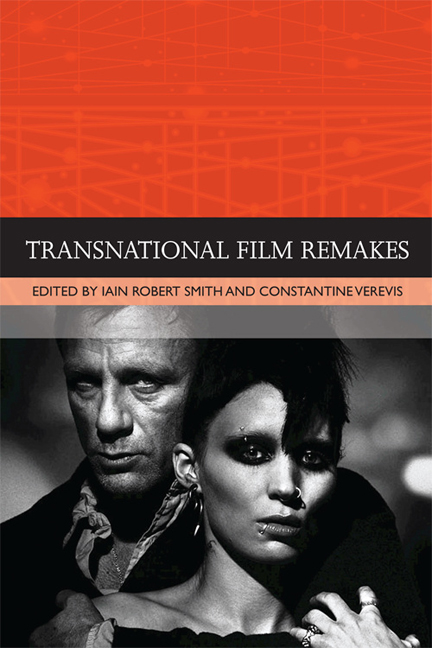Book contents
- Frontmatter
- Contents
- List of Illustrations
- Traditions in World Cinema
- Introduction: Transnational Film Remakes
- PART I GENRES AND TRADITIONS
- PART II GENDER AND PERFORMANCE
- PART III AUTEURS AND CRITICS
- 9 A Tale of Two Balloons: Intercultural Cinema and Transnational Nostalgia in Le voyage du ballon rouge
- 10 ‘Crazed Heat’: Nakahira Ko and the Transnational Self-remake
- 11 Remaking Funny Games: Michael Haneke's Cross-cultural Experiment
- 12 Reinterpreting Revenge: Authorship, Excess and the Critical Reception of Spike Lee's Oldboy
- 13 The Transnational Film Remake in the American Press
- Notes on the Contributors
- Index
9 - A Tale of Two Balloons: Intercultural Cinema and Transnational Nostalgia in Le voyage du ballon rouge
from PART III - AUTEURS AND CRITICS
Published online by Cambridge University Press: 22 December 2017
- Frontmatter
- Contents
- List of Illustrations
- Traditions in World Cinema
- Introduction: Transnational Film Remakes
- PART I GENRES AND TRADITIONS
- PART II GENDER AND PERFORMANCE
- PART III AUTEURS AND CRITICS
- 9 A Tale of Two Balloons: Intercultural Cinema and Transnational Nostalgia in Le voyage du ballon rouge
- 10 ‘Crazed Heat’: Nakahira Ko and the Transnational Self-remake
- 11 Remaking Funny Games: Michael Haneke's Cross-cultural Experiment
- 12 Reinterpreting Revenge: Authorship, Excess and the Critical Reception of Spike Lee's Oldboy
- 13 The Transnational Film Remake in the American Press
- Notes on the Contributors
- Index
Summary
Intercultural cinema moves through space, gathering up histories and memories that are lost or covered over in the movement of displacement, and producing new knowledges out of the condition of being between cultures.
(Marks 2000: 78)A brief, seemingly inconsequential encounter between two anthropomorphised objects – one red, the other blue – occurs in Albert Lamorrise's Le ballon rouge (The Red Balloon, 1956). That meeting, which has generally been overlooked by critics writing about this French classic of pre-New Wave cinema, occurs after the mid-point of the narrative, in the moments leading up to the film's initially tragic, eventually transcendent, ending. The camera, which has been tracking the street-to-street wanderings of a Parisian schoolboy named Pascal (who has befriended an inquisitive, mischievous balloon), suddenly pans from left to right to pick up the movement of a young girl and her own magically endowed balloon as they pass by the protagonist going in the opposite direction. Pascal turns on his feet and sees that his helium-filled companion has momentarily left him, drifting towards the other balloon much like it had sidled up to its own mirror-reflected image in an earlier scene set in an outdoor antiques market. The boy quickly fetches the red balloon by its string, an action that recalls his first encounter with it (climbing a streetlamp where it was stuck and descending with the thing in tow). Separated from its new ‘friend’, the girl's blue balloon pursues the red one, a paradoxically animated inanimate object whose mysterious driftings through Paris have thus far gone unexplained. Repeating Pascal's earlier action, the girl chases after her balloon, retrieving it and whisking it away, never to be seen again.
This strange convergence, where red and blue, boy and girl, action and reaction, come together in the calm interlude that precedes the film's penultimate scene (showing the titular object being chased and eventually destroyed by a gang of street urchins), stands out for a number of reasons. In addition to suggesting a ‘shadow movie’ of sorts, one that follows not the young boy and his red balloon but rather the young girl and her blue balloon (an alternative story tucked away in the folds of Lamorrise's film, one whose outcome can only be imagined by the spectator), this encounter materialises an otherwise immaterial idea.
- Type
- Chapter
- Information
- Transnational Film Remakes , pp. 147 - 163Publisher: Edinburgh University PressPrint publication year: 2017



